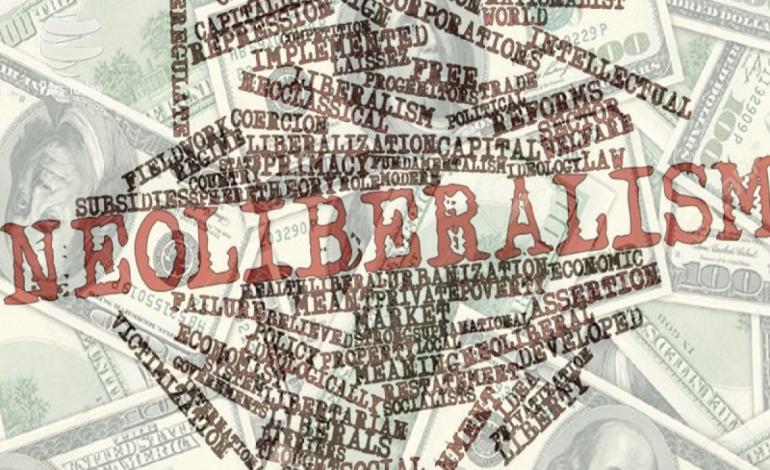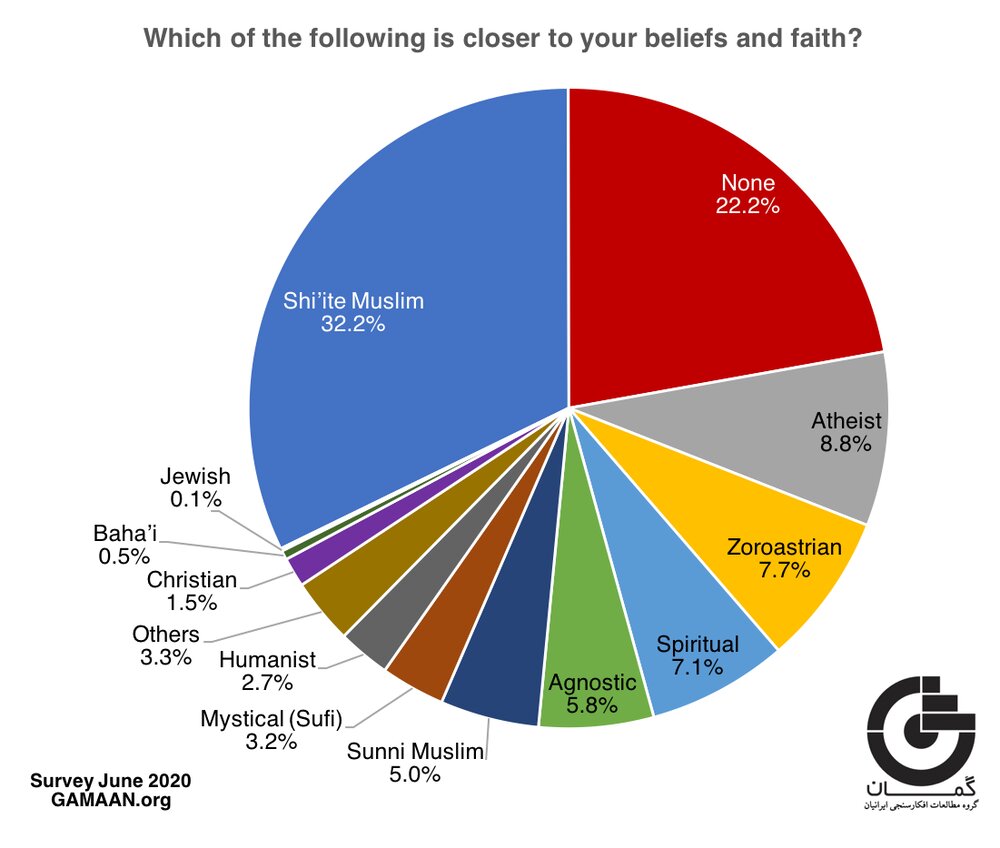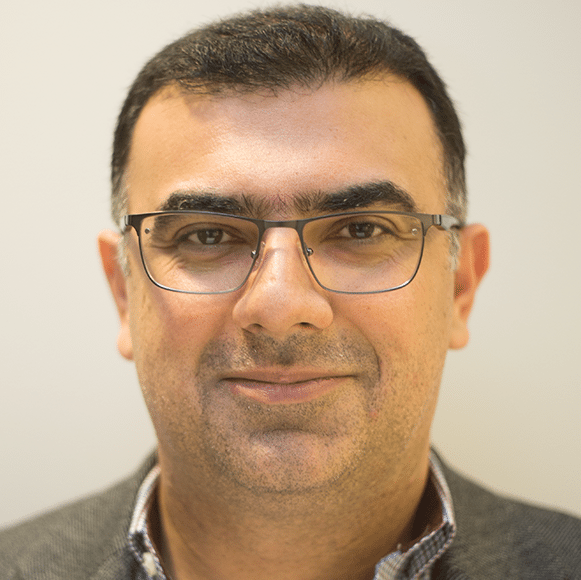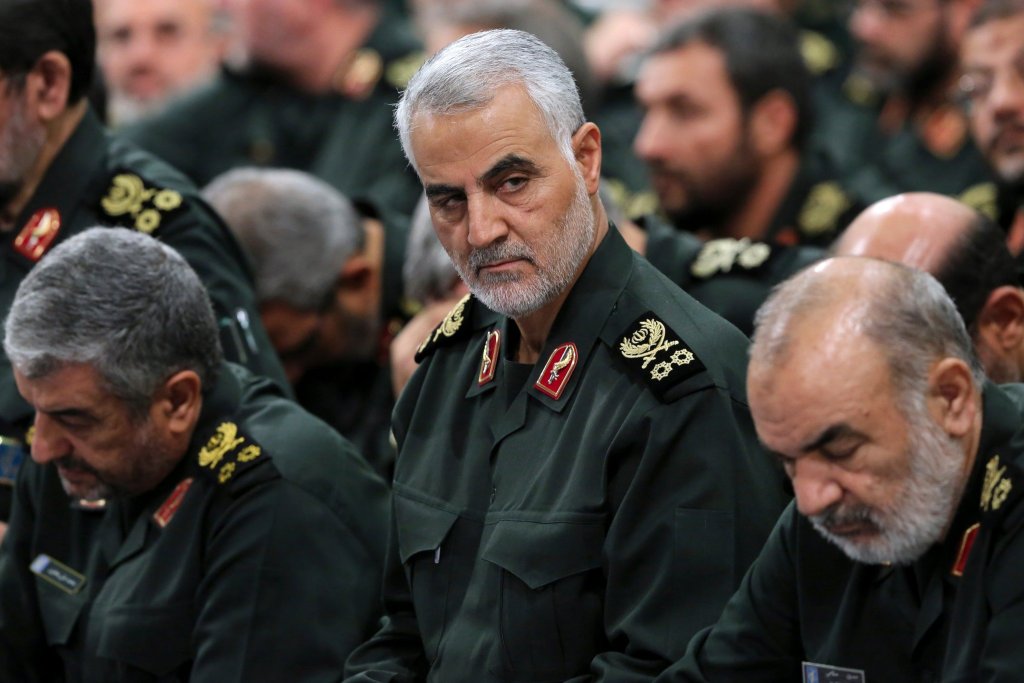شعارهای اعتراضی علیه نئولیبرالیسم در مراسم بزرگداشت شانزدهم آذر سال جاری از سوی شماری از دانشجویان دانشگاهها در تهران، با واکنشهای فراوان و متفاوت و گاه متضاد در کانونهای روشنفکری و محافل سیاسی و اجتماعی ایرانی هم در درون و هم در بیرون کشور روبرو شد. در یک طبقه بندی سریع و ساده، این واکنشها را عمدتا میتوان به دو دسته تقسیم کرد:
یک) شماری از صاحبنظران وابسته به طیفهای معروف به چپ ظهور دوباره اینگونه شعارها را در تظاهرات دانشجویی، آنهم در فاصله زمانی بسیار کوتاهی بعد از طغیان آبانماه، نشانه زنده ماندن افکار انقلابی دهههای پیش از استقرار نظام اسلامی در ایران به شمار میآورند، و از این که نسلهای جوان در فضای بحرانی کنونی کشور بار دیگر پرچم مبارزه با سرمایه داری و امپریالیسم را بر افراشتهاند، شادمانی میکنند. این گروه از صاحبنظران، همراه و همزبان با آنچه در بخشی از تظاهرات شانزده آذر تهران گذشت، بسیاری از مصیبتهای کنونی اقتصادی کشورشان را ناشی از پیشروی نئولیبرالیسم در سطح جهانی طی چند دهه گذشته، و تاثیر آن بر سردمداران جمهوری اسلامی، میدانند. همانها، در پشتیبانی از چند شعار دانشجویی مورد استفاده در مراسم مورد نظر، بر این باورند که رویدادهای اعتراضی اخیر چه در ایران و عراق و لبنان، و چه در فرانسه و شیلی، نشانه تازهای از طغیان ملتها علیه نئولیبرالیسم است.
دو) گروه دیگری از صاحبنظران پیش از آنکه با شعارهای سر داده شده در تظاهرات شانزده آذر دانشجویان تهران مشکل داشته باشند، از واکنش کسانی شگفت زدهاند که سی سال بعد از فرو ریزی دیوار برلن و فروپاشی «اردوگاه سوسیالیسم» همچنان با عینک جنگ طبقاتی و مبارزه علیه سرمایه داری به سیر تحولات سیاسی و اجتماعی درایران و جهان نگاه میکنند. این گروه، در واکنش به سخنان شماری از وابستگان به طیفهای معروف به چپ، عمدتا دو پرسش زیر را پیش میکشند:
- اصولا یک نظام دین سالار متکی بر اقتصاد نفتی و دولتی، که برای صدور الگوی دینی و مکتبی خود به کشورهای همسایه حاضر به پذیرش هزینههای سنگین است، چه رابطهای با لیبرالیسم و نئولیبرالیسم دارد و چرا باید شکست تاریخی این نظام در عرصه اقتصادی را به این مفاهیم نسبت داد؟
- چگونه میتوان اعتراضهای اخیر در فرانسه و شیلی را، با آنچه در ایران و عراق و لبنان میگذرد، مشابه دانست و در همه این کشورها پای نئولیبرالیسم را به میان کشید؟
در توضیح پرسش دوم باید گفت که فرانسه یکی از مهم ترین کانونهای دمکراسی در جهان است و نظام اجتماعی آن (در عرصه هایی چون بیمه بیکاری، بیماری و بازنشستگی) یکی از پیشرفته ترین نظامها در گروه کشورهای پیشرفته است. شیلی نیز از یک نظام سیاسی و اقتصادی مطلوب دستکم در مقایسه با بسیاری دیگر از کشورهای آمریکای جنوبی برخوردار است. آیا میتوان این دو کشور را با ایران و عراق و لبنان هم کیسه کرد؟
آنچه در این میان بیش از همه جلب توجه میکند، ابهامها و سوء برداشت هایی است است که بر مفهوم نئولیبرالیسم سنگینی میکند، به ویژه در نوشتههای کسانی که در پشتیبانی از شعار دهندگان روز دانشجو در تهران اصرار دارند شکست اقتصادی جمهوری اسلامی را به پیروی از هواداران این مکتب نسبت بدهند. ولی برای درک بهتر نئولیبرالیسم، نخست باید به لیبرالیسم نگاهی بیندازیم.
لیبرالیسم
مهم ترین مانع بر سر درک واقعیت لیبرالیسم، محدود کردن آن در یک قالب صرفا اقتصادی است. از دیدگاه بخشی از افکار عمومی از جمله در شماری از کشورهای پیشرفته، لیبرالیسم به اقتصاد آزاد یا بازار محور خلاصه میشود که گویا قانون جنگل را بر روابط میان انسانها حاکم میکند، خود خواهی و منفعت طلبی را به جای ارزشهای اخلاقی مینشاند، عدالت اجتماعی را از میان میبرد، با کاهش قدرت دولت به هرج و مرج میدان میدهد، زمینه یک سلطه بلا منازع را برای ثروتمندان فراهم میآورد، همه ارزشها را با پول پیوند میزند، همه چیز را به کالا بدل میکند و از بحرانی به بحران دیگر کشانده میشود... بد نیست بدانیم که حتی در کشوری مثل فرانسه که یکی از مهم ترین بسترهای پیدایش اندیشه لیبرال به شمار میرود، کم تر شخصیت و یا حزب سیاسی است که حاضر باشد در پلاتفرمهای انتخاباتی خود از این مفهوم استفاده کند.
واقعیت اما چیز دیگری است. لیبرالیسم پیش از آنکه یک تئوری صرفا اقتصادی باشد، یک نظام فلسفی است با ابعاد حقوقی و سیاسی و البته اقتصادی که همگی بر اصولی مشترک تکیه دارند. ریشههای این نظام فلسفی به یونان (از جمله نمایشنامه آنتیگون اثر سوفوکل) و رم باستان میرسد، ولی شکلگیری آن به عنوان مجموعهای منسجم از دوره روشنایی و به ویژه از ابتدای قرن هیجدهم میلادی آغاز میشود. این مجموعه، اگر بخواهیم آنرا خلاصه کنیم، بر «حقوق طبیعی» هر انسان تکیه میکند که آزادی، امنیت و مالکیت از جمله اجزاء اصلی آن به شمار میروند. «حقوق طبیعی» از دیدگاه مکتب لیبرال پیش از پیدایش دولت وجود داشته و قوانین مصوب دولت تنها زمانی قابل قبولاند که با «حقوق طبیعی» آشتی پذیر باشند. لیبرالیسم قوانینی را عادلانه میداند که به هر انسانی اجازه دهد همزمان با زندگی و فعالیت و همکاری در درون جامعه، در حفظ ویژگیهای فردیاش از خود مختاری برخوردار باشد و در همان حال ویژگیهای فردی میلیونها انسان خود مختار دیگر را، که در ارتباط با او زندگی میکنند، محترم بشمارد. از مجموعه همین ویژگیهای فردی یک نظم خود به خود زاییده میشود که بر هر نظم مصنوعی و فرمایشی برتری دارد.
هدف غایی دولت، از دیدگاه همان مکتب، پاسداری از «حقوق طبیعی» و مشتقات و الزامات آن است. برای جلوگیری از فرو غلطیدن دولت در کام استبداد و نقض «حقوق طبیعی» توسط آن، لیبرالیسم بر اصل تفکیک قوای مقننه، مجریه و قضاییه و استقرار دمکراسی به منظور ممانعت از یکه تازی قدرت سیاسی تاکید میکند.
همان اصول حقوقی و سیاسی را لیبرالیسم بر عرصه اقتصاد انطباق میدهد. دولت از دیدگاه این مکتب تنها ژاندارم و سرباز و قاضی است و نباید به صنعتگر و بازرگان و بانکدار بدل بشود. مکتب لیبرال در اشکال کلاسیک (با نظریه پردازانی چون آدام اسمیت و دیوید ریکاردو...) و نئو کلاسیک (لئون والراس، الفرد مارشال، پل ساموئلسون...) خود بر این اعتقاد است که عرصه فعالیت اقتصادی در یک کشور باید از مداخله دولت بر کنار بماند. آدام اسمیت در سال ۱۷۷۶ میلادی برای نخستین بار از «دست ناپیدایی» سخن میگوید که نقش اصلی آن ایجاد یک نظم خود به خود در بازار آزاد است. نظم بازار آزاد زاییده تلاش افراد خود مختار برای تامین منافع فردی است که در تراکنشهای درون جامعه انسانی نقشی تعیین کننده دارند و در مجموع، از دیدگاه آدام اسمیت، نتایج اجتماعی مثبتی را به بار میآورند.
در اثار نظریه پردازان لیبرال آزادی سیاسی با آزادی اقتصادی ارتباط تنگاتنک دارد. نمیتوان برای تامین و حفظ آزادیهای سیاسی اصل تفکیک قوا و دموکراسی را پذیرفت، ولی اقتصاد آزاد یا بازار محور را زیر پرسش برد. از پیدایش مکتب لیبرال تا به امروز، هیچ یک از دموکراسیها بر پایه یک اقتصاد دولت محور به وجود نیآمدهاند. تجربه هایی همانند شیلی در دوره ژنرال پینوشه، اسپانیا در زمان فرانکو و حتی جمهوری خلق چین در زمان حاضر نشان میدهند که استقرار اقتصاد آزاد یا نیمه آزاد بدون دموکراسی امکان پذیر است. در عوض دموکراسی بدون اقتصاد آزاد در هیچ کشوری دیده نشده است. سیاستمداران و روشنفکرانی که لیبرالیسم سیاسی را میپذیرند ولی با لیبرالیسم اقتصادی مشکل دارند، دستکم تا امروز نتوانستهاند نمونهای قابل قبول برای اثبات نظریه خود ارائه دهند. آزادیهای سیاسی و اقتصادی جدایی ناپذیرند و تصادفی نیست که در همه کشورهای توسعه یافته برخوردار از نظام دموکراتیک، بدون استثنا، اقتصاد بر سه ستون عمده تکیه دارد: حرمت حق مالکیت، آزادی کسب وکار و اصل رقابت. نروژ و ژاپن، آمریکا و آلمان، انگلستان و فرانسه، با وجود تفاوتهای بزرگی که میان آنها وجود دارد، در ضرورت پاسداری از این سه مظهر آزادی اقتصادی با هم مشترکند.
نئو لیبرالیسم
در تعریف بنیانهای لیبرالیسم میتوان بر آثار متفکران بزرگی تکیه کرد که بسیاری از آنها در قرون نوزدهم و بیستم از انگلستان و فرانسه برخاستهاند. در عوض نئولیبرالیسم در هالهای از ابهام است و تعاریف متفاوت و گاه متضادی میتوان از آن ارائه کرد که شمار زیادی از آنها به جای ریشه داشتن در آثار علمی، از نوشتههای ژورنالیستی و شعارهای خیابانی تاثیر پذیرفتهاند. یکی از مشکلات عمده در تعریف این مفهوم، استفاده از پیشوند «نئو» است. معلوم نیست که استفاده از این پیشوند از تغییر ماهیت لیبرالیسم حکایت میکند، یا نشانه به انحراف کشانده شدن آن است، و یا از افراطی شدن و در نتیجه زیان بخش شدن (یا زیان بخش تر شدن) آن خبر میدهد. همین معمای پیشوند «نئو» را ما در مفاهیم دیگری همچون «نئو کان ها» مییابیم.
نگارنده این سطور به یاد میآورد که در دوران تحصیلات دانشگاهیاش در اواخر دهه ۱۹۶۰ و اوایل دهه ۱۹۷۰ میلادی، نئولیبرالیسم معنایی کاملا متفاوت با امروز داشت. گفتیم که نظریه پردازان لیبرال (چه کلاسیک و چه نئوکلاسیک) معتقد به نظم خود به خودی بازار بودند و اصرار داشتند که حتی در اوج بحرانهای اقتصادی، دولت باید از دخالت در فعل و انفعالات بازار خود داری کند. در پی زمین لرزه اقتصادی سال ۱۹۲۹، که عمیق ترین و تکان دهنده ترین بحران در تاریخ اقتصادهای صنعتی است، اعتقاد به «دست نامریی» بازار دچار خلل شد، به ویژه زیر تاثیر یکی از غولهای بزرگ تفکر اقتصادی به نام جان مینارد کینز که به اقتصاد آزاد باور داشت و آنرا کار آمد ترین نظام برای تامین رفاه مردم میدانست، ولی به شرط آنکه دولت در اقتصاد مداخله کند. تجویز مداخله دولت در اقتصاد برای خروج از بحرانهای اقتصادی، به ویژه با استفاده از مکانیسمهای بودجه، یک چرخش بزرگ در تاریخ اندیشههای اقتصادی به شمار میرفت، چرخشی که در ادبیات دانشگاهی آنزمان «نئو لیبرالیسم» نام گرفت. پیشوند «نئو» بدان معنا بود که لیبرالیسم سنتی دگم بنیادی خود در زمینه عدم مداخله دولت در اقتصاد را کنار گذاشته و به لیبرالیسمی تازه بدل شده است.
اندیشه کینز (کینزیانیسم) در سالهای بعد از جنگ جهانی دوم به راهنمای اقتصادی شمار زیادی از قدرتهای بزرگ اقتصادی در اروپا و آمریکای شمالی بدل شد. کشورهای ثروتمند غربی و حتی شماری از کشورهای بر آمده از استعمار زدایی، داروی شفا بخش همه مشکلات اقتصادی به ویژه رکود را در نسخههای دکتر کینز جستجو میکردند. حتی این تصور به تدریج شکل گرفت که کینز با تجویز مداخله جویی دولت در اقتصاد راه را بر وقوع بحرانهای شدید اقتصادی بسته است. ولی از اوایل دهه ۱۹۷۰ میلادی، نسخههای کینز دیگر جواب نداد و رکود توام با تورم (رکود تورمی) به تدریج دامن همه اقتصادهای پیشرفته را گرفت. همزمان با این تحول، عمر نئولیبرالیسم مبتنی بر اندیشههای کینز نیز به پایان رسید.
بی اثر شدن نسخههای کینزی به اقتصاد دانانی میدان داد که خواستار بازگشت به اصول بنیادی لیبرالیسم بودند. نقش پیامبر را، دراین بازگشت، فدریش هایک فیلسوف و اقتصاد دان اتریشی الاصل برعهده داشت. او که سالهای سال به دلیل اوجگیری اندیشههای کینز به حاشیه رانده شده بود، با رنگ باختن رقیب خود به چهرهای مسلط در میان نظریه پردازان اقتصادی جهان بدل شد. همکار او میلتون فریدمن، اقتصاد دان آمریکایی بر آمده از مکتب شیکاگو، یکی دیگر از ستارگان علم اقتصاد بود. هر دوی آنها بر خلاف کینز کاهش نقش دولت در اقتصاد را تجویز میکردند و اقتصاد بازار محور را تنها راه دستیابی به ازادیهای سیاسی و اقتصادی میدانستند. با روی کار آمدن مارگارت تاچر در انگلستان و دونالد ریگان در ایالات متحده آمریکا، هایک و فریدمن از دو هوادار با نفوذ و پر قدرت برخوردار شدند و اندیشههای آنان موج عظیمی از آزاد سازی اقتصادی را نخست در دنیای انگلوساکسون و سپس در سراسر جهان به راه انداخت. بعدها با فرو ریزی دیوار برلن، فروپاشی شوروی و تغییرات بنیادی در سیاست اقتصادی جمهوری خلق چین، آزاد سازی اقتصادی و مقررات زدایی بخش بسیار بزرگ تری از کره خاک را در بر گرفت: دهها هزار واحد تولیدی از دولت به بخش خصوصی منتقل شدند، اصلاحات اقتصادی در راستای کاهش کسری بودجه شمار زیادی از کشورها را در بر گرفت، مرزهای گمرکی فرو ریختند و موانع از سر راه جا به جایی سرمایه برداشته شدند... با توسعه بازرگانی بین المللی و گسترش سرمایه گذاریهای خارجی، رویداد دیرینه جهانی شدن اقتصاد به مرحلهای تازه و بی سابقه گام نهاد و شمار بسیار زیادی از اقتصادها که در چارچوب مرزهای ملی خود زندانی بودند، به برونگرایی روی آوردند.
شگفت آنکه این چرخش تازه نیز، به رغم تفاوتهای فراوانش با سیاستهای کینزی، نئولیبرالیسم نام گرفت. به بیان دیگر هم کینز هوادار مداخله دولت در اقتصاد، نئولیبرال توصیف شد و هم مخالفان کینز که از بازگشت به لیبرالیسم سنتی و کاهش مداخله دولت در اقتصاد طرفداری میکردند.
آیا نئولیبرالیسم ملهم از تئوریهای هایک و فریدمن، و مهم ترین پیآمد آن که جهانی شدن اقتصاد است، در خور انتقادهای گاه دشنام گونهای است که از سوی مخالفان بر آنها وارد میآید؟ اینان نئولیبرالیسم را مسئول پیدایش دنیای دیوانه واری میدانند که اقلیت هایی را در اینجا و آنجا به ثروتهای افسانهای رسانده و بخش بزرگی از جامعه انسانی را در فلاکت غوطه ور کرده است. همین پدیده شوم، از دید منتقدان، فرهنگهای ملی را در هم شکسته و جوامعی را که گویا پیش از این در بطن فرهنگ سنتی خود با آرامش میزیستند، در اقیانوسی آشفته و انباشته از تنش سرگردان کرده است. از همه بد تر آنکه نئولیبرالیسم، باز هم به گفته منتقدانش، با دامن زدن به مخاطرات زیستمحیطی و به ویژه گرمایش زمین زیر تاثیر گازهای گلخانهای، کره زمین را در معرض نابودی قرار داده است.
شمار زیادی از این اتهامات از یک پوپولیسم عوامفریبانه سر چشمه میگیرند و تنها ساده انگارانی را فریب میدهند که نمیدانند تمدن انسانی طی چند دهه بعد از جنگ جهانی دوم از کجا به کجا رسیده است. با پیوستن به فرآیند جهانی شدن، به ویژه از راه گشودن مرزهایشان بر بازرگانی بین المللی و سرمایههای خارجی، شماری از کشورهای بسیار فقیر طی چند دهه از جمع «دوزخیان زمین» بیرون آمدند و به قدرتهای بزرگ اقتصادی بدل شدند. در میان این قدرتهای نوظهور، چین و هند با جمعیتی بیش از دو میلیارد و ششصد میلیون نفر، جای برجستهای دارند. در فاصله سالهای ۱۹۵۸ تا ۱۹۶۲، سی و شش میلیون نفر چینی در پی بزرگ ترین قحطی در تاریخ بشری جان سپردند. چهار دهه پیش وقوع قحطی در هند در زمره رویدادهای عادی جهان بود. با پیوستن بخش بزرگی از قاره آسیا به فرایند جهانی شدن، صدها میلیون نفر از جهنم فقر مطلق بیرون آمدند و به صف طبقه متوسط پیوستند. آیا باید متاسف بود که به برکت لیبرالیسم و آنچه نئو لیبرالیسم خوانده میشود، مرز میان دنیای صنعتی و جهان سوم، یا آنچه «شمال» و «جنوب» نامیده میشد، برای همیشه از میان رفته است؟ آیا باید متاسف بود که امروز شرکتهای چند ملیتی چینی و هندی و برزیلی و ترکیهای و کرهای و غیره مواضع همتایان غربی خود را در سراسر جهان به خطر انداختهاند؟
تکرار این واقعیتها به معنای چشم بستن بر ناهنجاری هایی نیست که طی چند دهه گذشته از فرآیند جهانی شدن اقتصاد منشا گرفته است. این فرآیند به کاهش شکاف میان گروه کشورهای پیشرفته صنعتی و گروه کشورهای در حال توسعه منجر شده، ولی به نابرابریهای اجتماعی در درون کشورهای متعلق به گروه اول دامن زده است. در واقع با شتاب گرفتن جا به جایی سرمایه به سوی قدرتهای نوظهور و ورود اینان به صحنه رقابت جهانی، موقعیت قشرهای فقیر و متوسط پایین در کشورهای صنعتی متزلزل شده و شماری از تعادلهای اجتماعی در این کشورها بر هم خورده است. از سوی دیگر با گسترش اقتصاد آزاد و افزایش تولید کالاها و خدمات در شماری از کشورها، تعادلهای زیستمحیطی دستکم گرفته شده و به ویژه خطر گرمایش زمین امروز دغدغه بزرگ جهانیان است.
آیا نظام ولایت فقیه به نئولیبرالیسم پیوسته؟
تلاش برای تعریف نئولیبرالیسم شاید ما را در شناخت این مفهوم اقتصادی یاری دهد، ولی هنوز نمیدانیم چرا و چگونه میتوان فرو ریزی سطح زندگی مردم ایران و گسترش فقر در کشور را به اجرای سیاستهای نئولیبرال نسبت داد؟
در گفتگویی با روزنامه «آرمان ملی» (که در سایت اخبار روز باز نشر یافته)، یکی از مهم ترین نمایندگان اندیشه چپ در ایران قاطعانه میگوید که از بعد از جنگ ایران و عراق تا به امروز، و یا به عبارتی در سه دهه اخیر جمهوری اسلامی، «آنچه بر اقتصاد ایران سایه انداخته و همه دولتها... یکی پس از دیگری از آن تبعیت میکنند، در واقع تابش سیاستهای نولیبرالی است که در سطح جهانی در میانه دهه ۸۰ قرن گذشته با توافق واشنگتن پیاده سازی شد... در ایران سیاست تعدیل اقتصادی همان فرزند نولیبرالیسم است.»
راست است که طی سی سال گذشته سه رییس جمهوری در ایران (اکبر هاشمی رفسنجانی، محمد خاتمی و حسن روحانی) تلاش کردند اصلاحاتی را زیر عنوان سیاست «تعدیل اقتصادی» در چارچوب نظام ولایت فقیه به اجرا بگذارند. نجات جمهوری اسلامی از خطر فرسایش، از دیدگاه آن سه نفر، در گرو انجام اصلاحاتی بود که عمدتا بر کوچک کردن دولت، متعادل ساختن بودجه، خصوصی سازی، اصلاح نظام مالیاتی، پیشبرد بازرگانی خارجی غیر نفتی و گشودن دروازههای کشور بر سرمایه گذاری خارجی تکیه داشتند. مساله در آنجا است که این اصلاحات در هر سه دوره مورد نظر به جایی نرسیدند و حتی به ضد خود بدل شدند. خصوصی سازی به شیر بی یال و دم و اشکم بدل شد، دولت سال به سال پروار تر شد، کشور در کام اقتصاد نفتی در جا زد و سرمایه گذاران خارجی هم به ایران نیامدند. در این شرایط چرا باید گناه فاجعه اقتصادی جمهوری اسلامی را به گردن اصلاحاتی انداخت که یا به اجرا گذاشته نشدند و یا به شکست انجامیدند؟
عامل اصلی شکست اصلاحات، علاوه بر ضعف و فساد و بی اعتقادی جناحهای معروف به «اصلاح طلب»، هسته مرکزی قدرت در جمهوری اسلامی است که به گرایشهای ملهم از سوسیالیسم نوع شوروی سابق بیشتر تمایل دارد تا به آنچه هواداران «تعدیل اقتصادی» ارائه داده و میدهند. بخش اقتصادی قانون اساسی جمهوری اسلامی با الهام گیری از نظریه پردازان «راه رشد غیر سرمایه داری» در حزب توده ایران نوشته شده است. ضدیت با غرب و اقتصاد آزاد در ذات دستگاهی است که پیرامون آیت الله خامنهای سکان واقعی قدرت را در دست دارند. در بودجه کل جمهوری اسلامی، بودجه شرکتها و بانکهای دولتی بیش از سه برابر بودجه عمومی کشور است. بخش بسیار بزرگ دیگری از اقتصاد ایران در تصاحب بنیادها و سپاه پاسداران است. در سیاست خارجی جمهوری اسلامی، کشورهای دارای نظام سیاسی چپ و ضد لیبرال جایگاه اول را دارند، از ونزوئلای مادورو و کوبای همچنان کاستریستی گرفته تا روسیه پوتین و کره شمالی.
مشکل میتوان پذیرفت که نظام جمهوری اسلامی، با چنین گزینش هایی در عرصههای داخلی و خارجی، از سیاستهای نئولیبرال الهام گرفته باشد.






